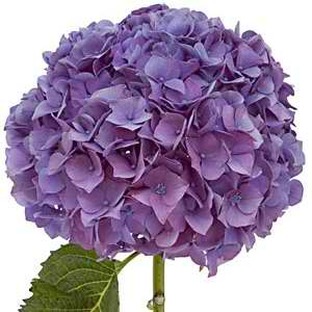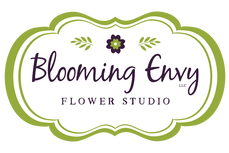 With the recent celebration of my 10th wedding anniversary I was reflecting on how wedding flower design has evolved over such a short period of time. My bouquet was a traditional cascade with a lace bouquet collar. Today you see more hand-tied or clutch bouquets with simple ribbon wraps. My bouquet was also one basic color or monochromatic. Today you see lots of bright, bold colors with lots of "bling". The main flower in my bouquet was purple hydrangeas. Although so much has changed Hydrangeas are just as popular today as they were then. Botanical Name: Hydrangea Macrophylla (hy-DRAIN-ja mak-row-FYE-la) First discovered in Japan, the name hydrangea comes from the Greek “hydor,” meaning water, and “angos,” meaning jar or vessel. This roughly translates to “water barrel,” referring to the hydrangea’s need for plenty of water and its cup-shaped flower. With its wooden stems and lacy, 1" star-shaped flowers packed closely together in a 4-8" pompom, the hydrangea’s color ranges from white, blue, lavender, purple, pink, red and green determined by the acidity level of the soil. Hydrangeas can also be dyed to match any color scheme. There remains some debate over the hydrangea’s symbolism – with some connecting it to vanity and boastfulness (perhaps reflecting its abundance of petals and lavish, rounded shape) and others suggesting that a bouquet of hydrangea expresses the giver’s gratefulness for the recipient’s understanding. Still others suggest it represents anything that’s sincerely heartfelt. Despite this variation in flower meaning, there appears to be an overwhelming consensus that this flower possesses enduring grace and beauty. Hydrangeas are a moderately priced flowers but with their large size less flowers are needed to make a big impact. Interesting Fact: There are approximately 23 species of Hydrangeas but only five are widely cultivated in the U.S.
0 Comments
|
AuthorFaye K.-Owner/Designer at Blooming Envy since 2005. Categories
All
|

 RSS Feed
RSS Feed